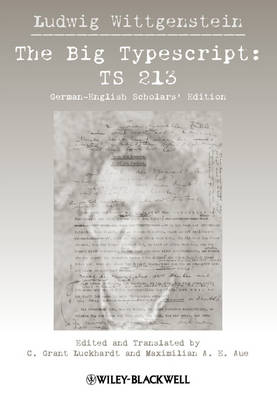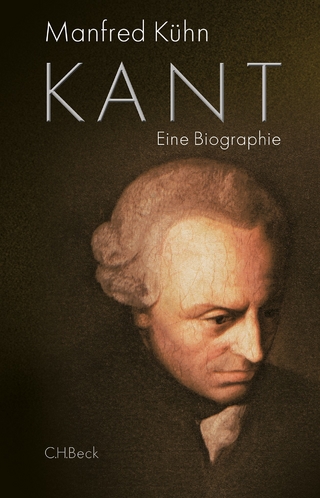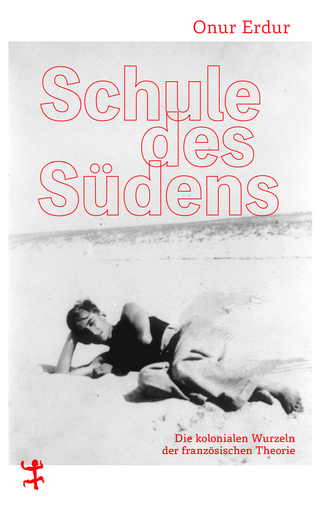
The Big Typescript
Wiley-Blackwell (Verlag)
978-1-4051-0699-3 (ISBN)
Long awaited by the scholarly community, Wittgenstein's so-called Big Typescript (von Wright Catalog # TS 213) is presented here in an en face English–German scholar's edition.
Presents scholar's edition of important material from 1933, Wittgenstein's first efforts to set out his new thoughts after the publication of the Tractatus Logico Philosophicus
Includes indications to help the reader identify Wittgenstein's numerous corrections, additions, deletions, alternative words and phrasings, suggestions for moves within the text, and marginal comments
C. Grant Luckhardt is Professor Emeritus of Philosophy at Georgia State University, where he was a member of the Philosophy Department and for many years the Director of the Honors Program. His research interests are in Wittgenstein and in Native American Thought and Culture. Maximillian E. Aue is Chair and Associate Professor of German Studies at Emory University. His publications include translations of the following works by Wittgenstein: Remarks on the Philosophy of Psychology, vol. II (1980), Last Writings on the Philosophy of Psychology, vol. I (1982), and Last Writings on the Philosophy of Psychology, vol. II (1992).
Editor's Note. Translator's Note.
Part I: Understanding.
1. Understanding, meaning, drop out of our considerations.
2. "Meaning" used amorphously. "Meaning" used equivocally.
3. Understanding as a correlate of an explanation.
4. Understanding a command the condition for our being able to obey it.
Understanding a proposition the condition for our acting in accordance.
with it.
5. Interpreting. Do we interpret every sign?.
6. One says: understanding a word means knowing how it is used. What does it mean to know that? We have this knowledge in reserve, as it were.
6a. Meaning a proposition seriously or in jest, etc.
Part II: Meaning.
7. The concept of meaning originates in a primitive philosophical conception of language.
8. Meaning, the position of the word in grammatical space.
9. The meaning of a word is what the explanation of its meaning explains.
10. "The meaning of a sign is given by its effect (the associations that it triggers, etc.).".
11. Meaning as feeling, standing behind the word; expressed with a gesture.
12. In giving an ostensive explanation of signs one doesn't leave grammar.
13. "Primary and secondary signs". Word and sample. Ostensive definition.
14. What interests philosophy about the sign, the meaning that is decisive for it, is what is laid down in the grammar of the sign.
Part III: Proposition. Sense of a proposition.
15. "Sentence" and "language" blurred concepts.
16. Logic talks about sentences and words in the ordinary sense, not in some abstract sense.
17. Sentence and sentence-sound.
18. What is to count as a proposition is determined in grammar.
19. Grammatical rules determine the sense of a proposition; and whether a.
combination of words makes sense.
20. The sense of a proposition not a soul.
21. Similarity of proposition and picture.
22. Propositions compared to genre-paintings. (Related to this: understanding a picture.).
23. Reality seems inherently able either to agree with a proposition or not.
to agree with it. A proposition seems to challenge reality to compare.
itself to it.
24. A symbol (a thought) as such seems to be unfulfilled.
25. A sentence is a sign within a system of signs. It is a combination of signs from among several possible ones and in contrast to other possible ones. One position of the pointer, as it were, in contrast to other possible ones.
26. Being able to imagine "what it would be like" as a criterion for a proposition having a sense.
27. "Logical possibility and impossibility". - The picture of "being able to" applied ultraphysically. (Similar to: "the excluded middle".).
28. Elementary proposition.
29. "How is the possibility of p contained in the fact that ~p is the case?" "How does, for example, a pain-free state contain the possibility of pain?".
30. How can the word 'not' negate?" The word "not" seems to us like an impetus to a complicated activity of negating.
31. Is time essential to propositions? Comparison between time and truth-functions.
32. The nature of hypothesis.
33. Probability.
34. The concept "roughly". Problem of the "heap of sand".
Part IV: Immediate understanding and the application of a word in time.
35. To understand a word = to be able to use it. To understand a language: to have command of a calculus.
36. How does understanding a sentence accompany uttering or hearing it?.
37. Is the meaning of a word shown in time? Like the actual degree of freedom in a mechanism? Is the meaning of a word only revealed in the course of time as its use develops?.
38. Does a knowledge of grammatical rules accompany the expression of a.
sentence when we understand it - its words?.
39. The rules of grammar - and the meaning of a word. Is meaning, when we understand it, grasped "all at once"? And unfolded, as it were, in the rules of grammar?.
Part V: The nature of language.
40. Learning, explanation, of language. Can we use explanation to construct.
language, so to speak, to get it to work?.
41. What effect does a single explanation of language have, what effect.
understanding?.
42. Can one use the word "red" to search for something red? Does one need an image, a memory-image, for this? Various searching-games.
43. "The connection between language and reality" is made through explanations of words, which explanations belong in turn to grammar. So that language remains self-contained, autonomous.
44. Language in our sense not defined as an instrument for a particular.
purpose. Grammar is not a mechanism justified by its purpose.
45. Language functions as language only by virtue of the rules we follow in using it, just as a game is a game only by virtue of its rules.
46. The functioning of a proposition explained with a language-game.
47. Assertion, question, assumption, etc.
Part VI: Thought. Thinking.
48. How does one think the proposition "p", how does one expect (believe, wish) that p will be the case? Mechanism of thinking.
49. "What is a thought, what must it be like for it to fulfill its function?" Here.
one wants to explain its essence by its purpose, its function.
50. Is a mental image a portrait par excellence, and thus fundamentally different from, say, a painted picture, and not replaceable by one or by any such thing? Is it a mental image that really represents a particular reality -.
simultaneously picture and what is meant?.
51. Is thinking a specifically organic process? A process specific to human.
psychology? If so, can one replace it with an inorganic process that fulfills.
the same purpose, that is, by a prosthesis, as it were?.
52. Location of thinking.
53. Thought and expression of thought.
54. What is thought? What is its essence? "Thought, this peculiar being.".
55. The purpose of thinking. The reason for thinking.
Part VII: Grammar.
56. Grammar is not accountable to any reality. The rules of grammar determine meaning (constitute it), and therefore they are not answerable to any meaning and in this respect are arbitrary.
57. Rule and empirical proposition. Does a rule say that words are actually used in such and such a way?.
58. The strict grammatical rules of a game and the fluctuating use of language.
Logic as normative. To what extent do we talk about ideal cases, an ideal.
language? ("The logic of a vacuum.").
59. Kinds of words are distinguished only by their grammar.
60. Tell me what you do with a proposition, how you verify it, etc., and I shall understand it.
Part VIII: Intention and depiction.
61. If in copying I am guided by a model and thus know that I am now.
moving my pencil in such a way because the model goes that way, is.
a causality involved here of which I am immediately aware?.
62. If we "depict in accordance with a particular rule", is this rule contained in the process of copying (depicting), and can it therefore be read out of it.
unambiguously? Does the process of depicting embody this rule, as it were?.
63. How does one use a general rule of representation to justify the result of representation?.
64. The process of copying on purpose, of copying with the intention to copy, is not essentially a psychological, inner process. A process of manipulating signs on a piece of paper can accomplish the same thing.
65. How are our thoughts connected with the objects we think about? How do these objects enter our thoughts? (Are they represented in our thoughts by something else - perhaps something similar?) The nature of a portrait; intention.
Part IX: Logical inference.
66. Do we know that p follows from q because we understand the propositions?.
Is entailment implied by a sense?.
67. "If p follows from q, then p must have been mentally included in q.".
68. The case of infinitely many propositions following from a single one.
69. Can an experience teach us that one proposition follows from another?.
Part X: Generality.
70. In a certain sense the proposition "The circle is in the square" is independent of the indication of a particular position (in a certain sense it has nothing to do with it).
71. The proposition "The circle is in the square" not a disjunction of cases.
72. The inadequacy of Frege's and Russell's notation for generality.
73. Criticism of my earlier understanding of generality.
74. Explanation of generality by examples.
75. The law of the formation of a series. "Etc.".
Part XI: Expectation. Wish. Etc.
76. Expectation: the expression of expectation. Articulate and inarticulate expectation.
77. What fulfillment brought: that was what was expected in expectation.
78. "How can one wish for, expect, look for, something that isn't there?".
Misunderstanding of the "something".
79. Expectation and fulfillment make contact in linguistic expression.
80. "The proposition determines which reality makes it true." It seems to provide a shadow of this reality. A command seems to anticipate its execution in a shadowy way.
81. Intention. What kind of a process is it? From an examination of this process one is supposed to be able to see what is being intended.
82. No feeling of satisfaction (no third thing) can be the criterion that expectation has been fulfilled.
83. Thought - expectation, wish, etc. - and the present situation.
84. Belief. Grounds for belief.
85. Reason, motive, cause.
Part XII: Philosophy.
86. Difficulty of philosophy not the intellectual difficulty of the sciences, but the difficulty of a change of attitude. Resistance of the will must be overcome.
87. Philosophy points out the misleading analogies in the use of our language.
88. Whence the feeling that our grammatical investigations are fundamental?.
89. The method of philosophy: the clearly surveyable representation of grammatical facts. The goal: the transparency of arguments. Justice.
90. Philosophy. The clarification of the use of language. Traps of language.
91. We don't encounter philosophical problems at all in practical life (as we do, for example, those of natural science). We encounter them only when we are guided not by practical purpose in forming our sentences, but by certain analogies within language.
92. Method in philosophy. The possibility of quiet progress.
93. The mythology in the forms of our language. ((Paul Ernst.)).
Part XIII: Phenomenology.
94. Phenomenology is grammar.
95. Can one penetrate more deeply into the properties of visual space? Say through experiments?.
96. Visual space in contrast to Euclidean space.
97. The seeing subject and visual space.
98. Visual space compared to a picture (two-dimensional picture).
99. Minima visibilia.
100. Colors and the mixing of colors.
Part XIV: Idealism, etc.
101. The representation of what is immediately perceived.
102. "The experience at the present moment, actual reality.".
103. Idealism.
104. "Having pain.".
105. Memory-time.
106. "Here" and "now".
107. Color, experience, etc., as formal concepts.
Part XV: Foundations of mathematics.
108. Mathematics compared to a game.
109. There is no metamathematics.
110. Proof of relevance.
111. Consistency proof.
112. Laying the foundations for arithmetic as preparation for its applications. (Russell, Ramsey.).
113. Ramsey's theory of identity.
114. The concept of the application of arithmetic (mathematics).
Part XVI: On cardinal numbers.
115. Kinds of cardinal numbers.
116. 2 + 2 = 4.
117. Statements of number within mathematics.
118. Sameness of number. Sameness of length.
Part XVII: Mathematical proof.
119. If I am looking for something in other cases I can describe finding it, even if it hasn't happened; it is different if I am looking for the solution to.
a mathematical problem. Mathematical expeditions and polar expeditions.
120. Proof, and the truth and falsity of mathematical propositions.
121. If you want to know what was proved, look at the proof.
122. Mathematical problems. Kinds of problems. Searching. "Tasks" in mathematics.
123. Euler's proof.
124. The trisection of an angle, etc.
125. Trying to find and trying.
Part XVIII: Inductive proofs. Periodicity.
126. To what extent does a proof by induction prove a proposition?.
127. Recursive proof and the concept of proposition. Did the proof prove a proposition true and its contradictory false?.
128. Induction. To what extent does induction prove a universal proposition true and an existential proposition false?.
129. Is a further inference to generality drawn from writing down the recursive proof? Doesn't the recursion schema already say all that needed to be said?.
130. To what extent does a recursive proof deserve the name "proof"? To what extent is a step in accordance with the paradigm A justified by the proof of B?.
131. The recursive proof doesn't reduce the number of fundamental laws.
132. Periodicity. 1 ⁄ 3 = 0.3.
133. The recursive proof as a series of proofs.
134. Seeing and understanding a sign in a particular way. Discovering an aspect of a mathematical expression. "Seeing an expression in a particular.
way." Marks of emphasis.
135. Proof by induction, arithmetic and algebra.
Part XIX: The infinite in mathematics. The extensional viewpoint.
136. Generality in arithmetic.
137. On set theory.
138. The extensional conception of the real numbers.
139. Kinds of irrational numbers.
140. Irregular infinite decimals.
Appendix I.
Index
| Erscheint lt. Verlag | 29.7.2005 |
|---|---|
| Übersetzer | C. Grant Luckhardt, Maximilian E. Aue |
| Verlagsort | Hoboken |
| Sprache | englisch |
| Maße | 180 x 254 mm |
| Gewicht | 1923 g |
| Themenwelt | Geisteswissenschaften ► Philosophie ► Geschichte der Philosophie |
| Geisteswissenschaften ► Philosophie ► Philosophie der Neuzeit | |
| ISBN-10 | 1-4051-0699-9 / 1405106999 |
| ISBN-13 | 978-1-4051-0699-3 / 9781405106993 |
| Zustand | Neuware |
| Haben Sie eine Frage zum Produkt? |
aus dem Bereich


